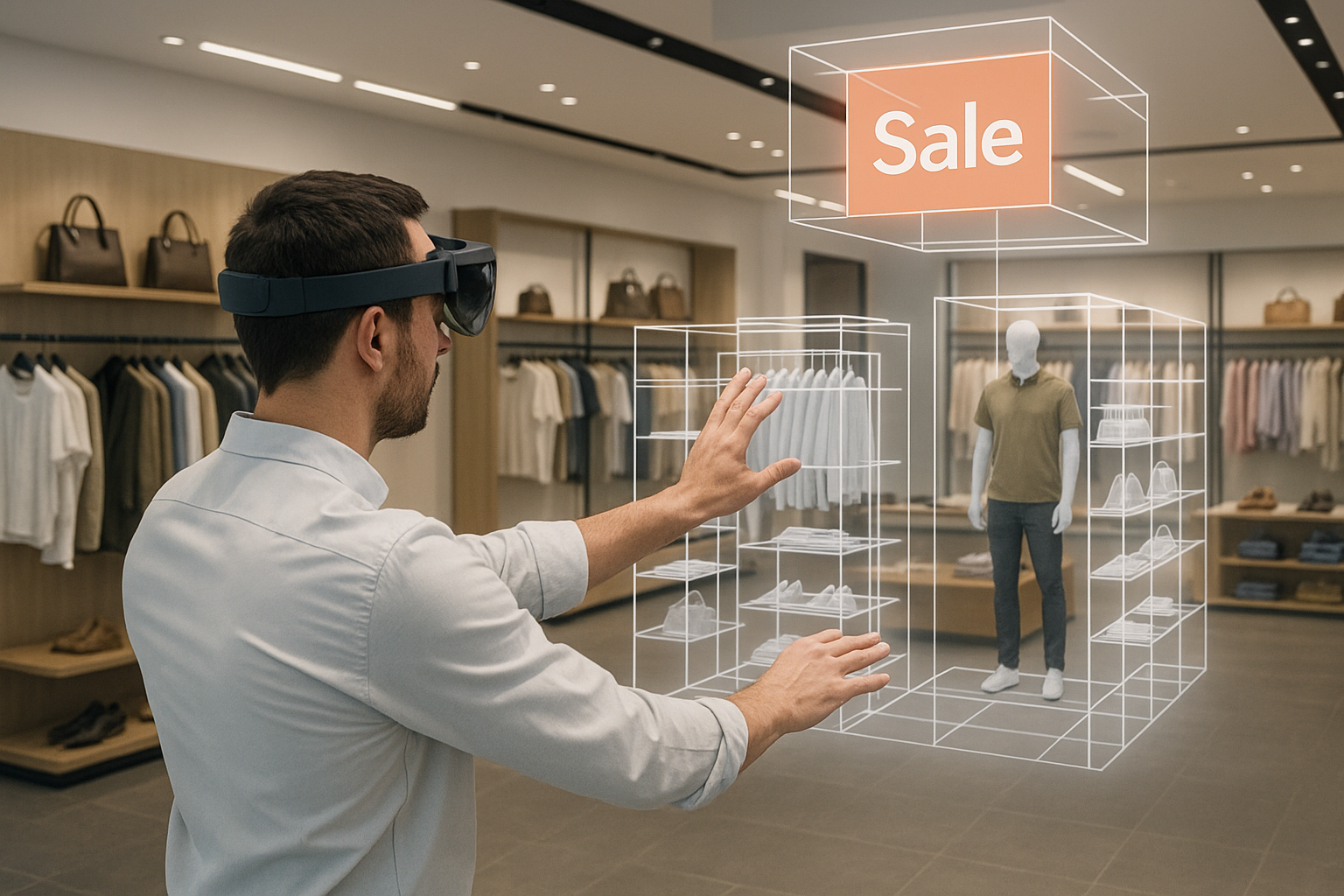What’s new in AR this month? In early August 2025, Meta announced its upcoming AR glasses beta program, inviting select developers to test real-time AI-assisted object recognition in public spaces. Scheduled for rollout in September, the initiative aims to blend product discovery, navigation, and contextual information directly into the AR view—setting a new benchmark for consumer AR experiences.
What are AR glasses with AI object recognition?
AR glasses with AI object recognition are wearable devices that combine advanced optics, sensors, and artificial intelligence to identify, label, and provide information about objects in real time. This is not science fiction—modern AR devices use high-resolution cameras, depth sensors, and onboard AI chips to detect and contextualize the world around you.
Imagine walking down a street and having your glasses automatically display the name of a building, its opening hours, the history of its architecture, or even real-time customer reviews of a café you’re passing. In retail, you could glance at a product and instantly see price comparisons, sustainability ratings, or personalized discounts—without pulling out your phone.
Why this is a turning point
- Hands-free interaction: Eliminates the constant need to look down at a phone or device.
- Hyper-contextual experiences: Information appears when and where it’s most relevant.
- Scalable to multiple industries: Retail, tourism, healthcare, field service, and accessibility solutions.
Quick Facts
- Beta launch: August 2025, with wider release expected Q1 2026.
- Key features: Object recognition, translation, navigation, real-time search integration.
- Key players: Meta, Apple, Google, Xreal, and Samsung/XR collaborations.
How AR glasses with AI object recognition work
The technology stack powering these devices is a fusion of several advanced systems:
1. Computer vision
High-resolution cameras capture the environment in real time. AI models process each frame, recognizing objects, shapes, and even specific brands or SKUs.
2. Natural language processing (NLP)
Once objects are identified, NLP algorithms turn raw data into human-friendly summaries—like “Italian restaurant, 4.7 stars, open until 11 pm.”
3. Edge AI processing
To reduce latency and protect privacy, most processing happens directly on the device using integrated AI chips, avoiding constant cloud uploads.
4. AR display integration
Micro-OLED or waveguide-based displays project contextual overlays into the user’s field of view, anchoring information spatially to the recognized object.
Everyday use cases and scenarios
1. Navigation and wayfinding
Whether in a busy airport or an unfamiliar city, AR glasses can project arrows, highlight points of interest, and even adapt routes in real time to avoid crowds or hazards.
2. Retail and shopping
AR glasses let you compare prices, see sustainability ratings, or get personalized promotions as soon as you look at a product. Staff can use them to locate items, check stock, and provide real-time customer support.
3. Tourism and culture
Stand in front of a landmark and instantly view its history, architectural details, and historical imagery of how it looked in the past.
4. Accessibility and assistance
For visually impaired users, AI object recognition can audibly describe the environment—identifying obstacles, reading signs aloud, and detecting approaching vehicles.
Impact across industries
Retail
- In-store product identification and dynamic pricing updates.
- Guided picking for staff to fulfill online orders faster.
Healthcare
- Surgeons can see patient vitals overlaid in their field of view.
- Nurses can identify medications and dosage instructions instantly.
Field services
- Technicians can see wiring diagrams directly overlaid on physical equipment.
- Step-by-step repair instructions appear hands-free.
Privacy and ethical considerations
While AI-powered AR glasses are exciting, they also raise privacy questions:
- How is bystander data handled?
- Will devices store visual data locally or in the cloud?
- How will facial recognition features be regulated?
Meta’s beta program focuses on on-device processing and explicit user permissions, but wider adoption will require clear global standards.
Best practices for adopting AR glasses in business
- Start with clear use cases: Identify where real-time recognition adds measurable value.
- Train employees and users: Provide onboarding on interpreting and acting on AR data.
- Integrate with existing systems: Ensure AR outputs connect to CRM, inventory, or ticketing tools.
- Plan for accessibility: Use audio cues and adjustable overlays for all users.
Market trends and future outlook
Analysts expect the AR glasses market to grow from $12 billion in 2025 to $36 billion by 2030, driven by enterprise adoption, consumer lifestyle integration, and AI advancements. The convergence of spatial computing, AI, and 5G/6G will make these experiences seamless and mainstream.
Next-gen capabilities coming soon
- Full-scene understanding—recognizing relationships between objects.
- Predictive assistance—suggesting actions before you ask.
- Contextual AI personalities—offering advice in different tones and expertise levels.
References
Key takeaways
- AI object recognition transforms AR glasses from novelty to necessity.
- Meta’s beta program is a major signal that consumer AR is ready for scale.
- Industry adoption will accelerate where hands-free contextual data offers clear ROI.




